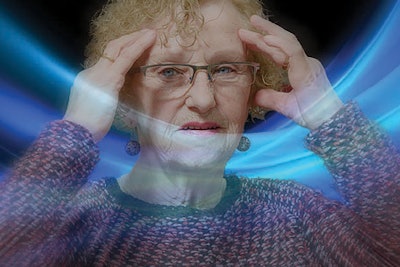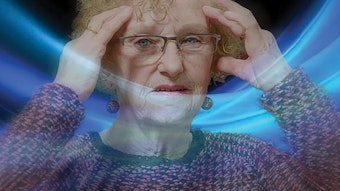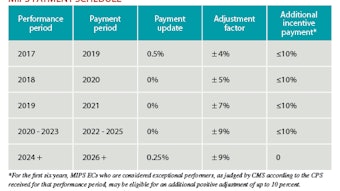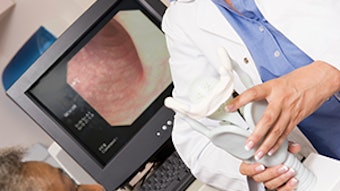Clinical Practice Guideline: Benign Paroxysmal Positional Vertigo (Update)
The primary purpose of the update to the 2008 Clinical Practice Guideline: Benign Paroxysmal Positional Vertigo is to improve quality of care and outcomes for benign paroxysmal positional vertigo (BPPV) by improving the accurate and efficient diagnosis of BPPV, reducing the inappropriate use of vestibular suppressant medications, decreasing the inappropriate use of ancillary testing such as radiographic imaging, and increasing the use of appropriate therapeutic repositioning maneuvers.
Adapted from the March 2017 Supplement to Otolaryngology–Head and Neck Surgery. Read the guideline at otojournal.org.

The 2017 update was chaired by Neil Bhattacharyya, MD, with Samuel P. Gubbels, MD, serving as the assistant chair, and Seth R. Schwartz, MD, MPH, as the methodologist.
“The significant incidence of BPPV, its functional impact, and the wide diversity of diagnostic and therapeutic interventions for BPPV drove the need for an up-to-date practice guideline,” said Dr. Bhattacharyya. “Our goal was to revise the 2008 guideline with an a priori determined and transparent process, reconsidering a more current evidence base while also factoring in BPPV treatments that result in improved quality of life for the patient.”
Differences between the 2008 guideline and the 2017 update include:
- a consumer advocate added to the development group;
- new evidence from two clinical practice guidelines, 20 systematic reviews, and 27 randomized controlled trials;
- enhanced emphasis on patient education and shared decision-making;
- expanded action statement profiles to explicitly state quality improvement opportunities, confidence in the evidence, intentional vagueness, and difference of opinion;
- enhanced external review process to include public comment and journal peer review;
- a new algorithm to clarify decision making and action statement relationships; and
- new and expanded recommendations for the diagnosis and management of BPPV.
The update is endorsed by American Academy of Audiology (AAA), American Neurotology Society (ANS), American Otological Society (AOS), Society of Otorhinolaryngology Head-Neck Nurses (SOHN), American Academy of Emergency Medicine (AAEM), Vestibular Disorders Association (VEDA), American Physical Therapy Association (APTA), and The Triological Society. Additionally, the American Academy of Family Physicians (AAFP) and the American Academy of Neurology (AAN) gave an Affirmation of Value.
The full guideline, as well as other resources, are available at http://www.entnet.org/BPPVcpg as well as in Otolaryngology–Head and Neck Surgery as published at otojournal.org.
The guideline is intended for all clinicians who are likely to diagnose and manage patients with BPPV, and it applies to any setting in which BPPV would be identified, monitored, or managed.
The primary outcome considered in this guideline is the resolution of the symptoms associated with BPPV. Secondary outcomes considered include an increased rate of accurate diagnoses of BPPV, a more efficient return to regular activities and work, decreased use of inappropriate medications and unnecessary diagnostic tests, reduction in recurrence of BPPV, and reduction in adverse events associated with undiagnosed or untreated BPPV. Other outcomes considered include minimizing costs in the diagnosis and treatment of BPPV, minimizing potentially unnecessary return physician visits, and maximizing the health-related quality of life of individuals afflicted with BPPV.
Guideline Key Action Statements
1a DIAGNOSIS OF POSTERIOR SEMICIRCULAR CANAL BPPV
Clinicians should diagnose posterior semicircular canal BPPV when vertigo associated with torsional, up-beating nystagmus is provoked by the Dix-Hallpike maneuver, performed by bringing the patient from an upright to supine position with the head turned 45 degrees to one side and neck extended 20 degrees with the affected ear down. The maneuver should be repeated with the opposite ear down if the initial maneuver is negative.
1b DIAGNOSIS OF LATERAL (HORIZONTAL) SEMICIRCULAR CANAL BPPV
If the patient has a history compatible with BPPV and the Dix-Hallpike test exhibits horizontal or no nystagmus, the clinician should perform, or refer to a clinician who can perform, a supine roll test to assess for lateral semicircular canal BPPV.
2a DIFFERENTIAL DIAGNOSIS
Clinicians should differentiate, or refer to a clinician who can differentiate, BPPV from other causes of imbalance, dizziness, and vertigo.
2b MODIFYING FACTORS
Clinicians should assess patients with BPPV for factors that modify management including impaired mobility or balance, central nervous system disorders, a lack of home support, and/or increased risk for falling.
3a RADIOGRAPHIC TESTING
Clinicians should not obtain radiographic imaging in a patient who meets diagnostic criteria for BPPV in the absence of additional signs and/or symptoms inconsistent with BPPV that warrant imaging.
3b VESTIBULAR TESTING
Clinicians should not order vestibular testing in a patient who meets diagnostic criteria for BPPV in the absence of additional vestibular signs and/or symptoms inconsistent with BPPV that warrant testing.
4a REPOSITIONING PROCEDURES AS INITIAL THERAPY
Clinicians should treat, or refer to a clinician who can treat, patients with posterior canal BPPV with a canalith repositioning procedure.
4b POST-PROCEDURAL RESTRICTIONS
Clinicians should not recommend post procedural postural restrictions after canalith repositioning procedure for posteriorcanal BPPV.
4c OBSERVATION AS INITIAL THERAPY
Clinicians may offer observation with follow-up as initial management for patients with BPPV.
5 VESTIBULAR REHABILITATION
The clinician may offer vestibular rehabilitation in the treatment of BPPV.
6 MEDICAL THERAPY
Clinicians should not routinely treat BPPV with vestibular suppressant medications such as antihistamines and/or benzodiazepines.
7a OUTCOME ASSESSMENT
Clinicians should reassess patients within one month after an initial period of observation or treatment to document resolution or persistence of symptoms.
7b EVALUATION OF TREATMENT FAILURE
Clinicians should evaluate, or refer to a clinician who can evaluate, patients with persistent symptoms for unresolved BPPV and/or underlying peripheral vestibular or central nervous system disorders.
8 EDUCATION
Clinicians should educate patients regarding the impact of BPPV on their safety, the potential for disease recurrence, and the importance of follow-up.
Guideline authors
Neil Bhattacharyya, MD; Samuel P. Gubbels, MD; Seth R. Schwartz, MD, MPH; Jonathan A. Edlow, MD; Hussam El-Kashlan, MD; Terry Fife, MD; Janene M. Holmberg, PT, DPT, NCS; Kathryn Mahoney; Deena B. Hollingsworth, MSN, FNP-BC, CORLN; Richard Roberts, PhD; Michael D. Seidman, MD; Robert Wm. Prasaad Steiner, MD, PhD; Betty Tsai Do, MD; Courtney C. J. Voelker, MD, PhD; Richard W. Waguespack, MD; Maureen D. Corrigan
AAO-HNSF Guideline development process and the obligations associated with the guideline recommendations are documented in the Clinical Practice Guideline Development Manual, Third Edition: a quality-driven approach for translating evidence into action. (http://oto.sagepub.com/content/148/1_suppl/S1.long)
View the Benign Paroxysmal Positional Vertigo fact sheet












